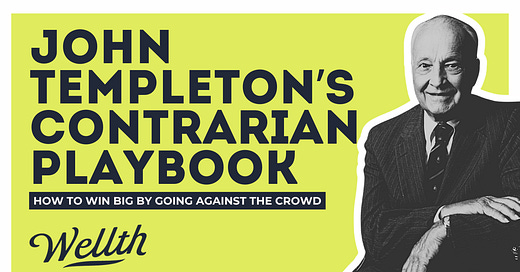John Templeton’s Contrarian Playbook: How to Win Big by Going Against the Crowd
Why the best opportunities are often found in the least popular places.
Sir John Templeton, the father of contrarian investing, built a fortune by doing the opposite of what most investors do. His guiding principle? “Buy at the point of maximum pessimism and sell at the point of maximum optimism.”
Templeton believed that extraordinary opportunities arise when markets are gripped by fear and panic. By going against the crowd, he consistently uncovered undervalued assets that eventually delivered massive returns. In this article, we’ll explore Templeton’s contrarian strategy, examine key moments of his success, and outline actionable steps to help you incorporate this timeless philosophy into your own investment decisions.
What is Contrarian Investing?
Contrarian investing is the art of defying conventional wisdom. While most investors follow trends and flock to “hot” stocks or sectors, contrarians deliberately seek undervalued assets that others are avoiding. This often means:
Buying during market crashes or recessions.
Investing in industries or regions that are out of favor.
Avoiding overpriced stocks during speculative bubbles.
The rationale is simple: Markets often overreact to both good and bad news, creating opportunities for disciplined investors who can keep their emotions in check.
John Templeton in Action: The World War II Trade
One of Templeton’s most famous trades occurred during World War II. In 1939, as Europe descended into chaos and global markets were in turmoil, Templeton made a bold move:
He borrowed $10,000 (equivalent to about $200,000 today) and invested in 104 U.S. companies trading at less than $1 per share.
Many of these companies were on the brink of bankruptcy, but Templeton believed that the market had over-discounted their value.
Within four years, his portfolio had quadrupled in value.
Key Takeaway: Templeton’s success wasn’t luck—it was a calculated risk based on the belief that even in dire circumstances, markets tend to recover over time.
The Core Principles of Templeton’s Contrarian Strategy
Keep reading with a 7-day free trial
Subscribe to Wellth Canada to keep reading this post and get 7 days of free access to the full post archives.




